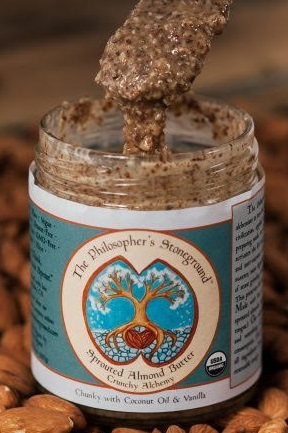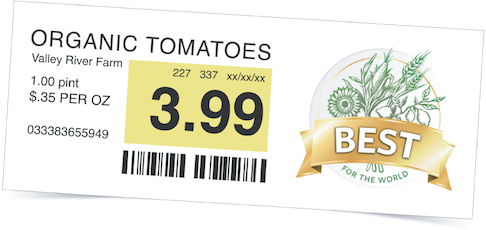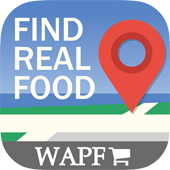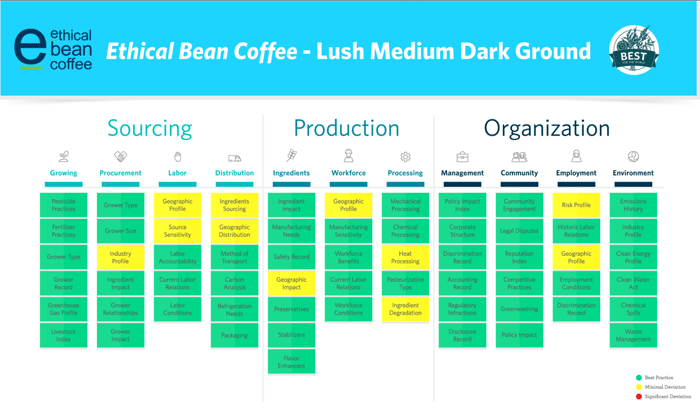
Art | Resources
Cat Spot Litter
 Super lightweight cat litter made from 100% organic coconut, delivered automatically to your door every month (or try a single bag).
Super lightweight cat litter made from 100% organic coconut, delivered automatically to your door every month (or try a single bag).
The Philospher’s Stoneground Sprouted Nut Butters
 About a year and a half after originally posting this I happened to encounter the creator of this business at the Heirloom Food Exhibition and tasted this almond butter. It is AMAZING. The flavor of almonds is much stronger than usual almond butter and it feels more alive. Way beyond ordinary food,……Spouted almond butters made from organic unpasteurized Spanish almonds sprouted in spring water and sea salt. Finished butter contains only residual salt from the sprouting process. “Sprouting makes almonds sweeter, more digestible, and more nutritious…Our sprouted almond butters feature unpasteurized, truly raw almonds from Spain, which have been grown using dry-farming methodology, a traditional water-sustainable and regionally-adapted approach to almond agriculture. We are the first drought-adapted almond butter company and intend to continue pioneering this path. All of our ingredients are Certified Organic and meticulously sourced. We create gluten-free, peanut-free, sweetener-free, Paleo, raw, and vegan sprouted almond butters.”
About a year and a half after originally posting this I happened to encounter the creator of this business at the Heirloom Food Exhibition and tasted this almond butter. It is AMAZING. The flavor of almonds is much stronger than usual almond butter and it feels more alive. Way beyond ordinary food,……Spouted almond butters made from organic unpasteurized Spanish almonds sprouted in spring water and sea salt. Finished butter contains only residual salt from the sprouting process. “Sprouting makes almonds sweeter, more digestible, and more nutritious…Our sprouted almond butters feature unpasteurized, truly raw almonds from Spain, which have been grown using dry-farming methodology, a traditional water-sustainable and regionally-adapted approach to almond agriculture. We are the first drought-adapted almond butter company and intend to continue pioneering this path. All of our ingredients are Certified Organic and meticulously sourced. We create gluten-free, peanut-free, sweetener-free, Paleo, raw, and vegan sprouted almond butters.”
Anne Steinemann Investigates Indoor Air Quality
Our favorite researcher Anne Steinemann has two new articles about toxic exposures in our homes. She is a Professor of Civil Engineering and Chair of Sustainable Cities at the University of Melbourne School of Engineering in Australia
Both the articles were both published in the journal Building and Environment.
“Ten questions concerning green building and indoor air quality” investigates the concern that green buildings may promote energy efficiency and other aspects of sustainability, but not necessarily the health and well-being of occupants through better indoor air quality (IAQ). Ten questions are asked which explore IAQ challenges for green buildings as well as opportunities
to improve IAQ within green buildings and their programs.
“Ten questions concerning air fresheners and indoor built environments” investigates the seeming paradox that products designed to improve the indoor environment can pose unintended and unknown risks. It examines the science, health, and policy perspectives, and provides recommendations
and research directions.
Really Good Summary of Endocrine Disruptors
This article by a medical doctor is focused on “gender bending,” but gives a really good summary of the main endocrine disrupting chemicals, where they are found, and tips to avoid them.
Target’s Commitment To Toxic-Free

Two weeks ago, Target announced a new commitment to eliminating toxics in their stores.
Their statement includes transparency and disclosure of all materials in all products, investing up to $5 million for green chemistry innovations, and development of safer alternatives.
Target will actively pursue the development of safer alternatives to achieve our goals. We will work to remove chemicals or find alternatives to those chemicals that could pose a risk to our guests, workers and community. When changes are made, we will ensure the integrity and safety of our products.
• Improve textile products by removing added Perfluorinated Chemicals (PFC’s) from products by 2022.
• Improve textile products by removing added flame retardants that are potential carcinogens or pose harm to the guest, workers or communities by 2022.
• Improve beauty, baby care, personal care and household cleaning product categories by formulating without phthalates, propyl-paraben, butyl-paraben, formaldehyde, formaldehyde-donors, or NPE’s by 2020.
I often shop at Target because I already see them carrying toxic-free products I can use. I just purchased a 2-gallon glass food storage jar there for less than $15, and it was the only place locally where I could find those jars in that size. So I’m very happy to see them moving more in this direction.
TARGET: Chemicals @ Target: Chemicals Policy & Goals
GREEN BIZ: Target’s new chemicals policy hits a bullseye
This is the next step in a movement that has been going on at least since 2011.
Q&A: WalMart and Other Retailers are Banning Toxic Chemicals in Products—Not Waiting for Government
Q&A: WalMart Takes Initiative to Get Manufacturers to Reduce Toxic Chemicals
Xtrema Cookware
 My #1 choice for healthy cookware, these Xtrema pots and pans are 100% ceramic, through and through–made only from natural minerals, clay and water. No metals are in this ceramic cookware. This lead-free high-tech all ceramic glaze is easy to clean and does not leach lead or any other toxic metals (see lab tests on website). The extremely hard ceramic cooking surface cannot be scratched by metal utensils or steel wool but I recommend wood utensils when cooking with Xtrema. Because the ceramic material holds heat exceptionally well, you can save energy by cooking at lower temperatures. The attractive and versatile cookware lets you take the food from the stove to the table and then to the refrigerator for storing leftovers. This is the cookware I use every day for almost everything I cook. NOTE: This cookware is lightweight and extremely easy to clean, however, I wouldn’t call it “nonstick.” Eggs will stick unless you spray your cookware with olive oil after the pan is heated on a low temperature for 3 minutes (see the video on the web site on How to Cook Eggs).
My #1 choice for healthy cookware, these Xtrema pots and pans are 100% ceramic, through and through–made only from natural minerals, clay and water. No metals are in this ceramic cookware. This lead-free high-tech all ceramic glaze is easy to clean and does not leach lead or any other toxic metals (see lab tests on website). The extremely hard ceramic cooking surface cannot be scratched by metal utensils or steel wool but I recommend wood utensils when cooking with Xtrema. Because the ceramic material holds heat exceptionally well, you can save energy by cooking at lower temperatures. The attractive and versatile cookware lets you take the food from the stove to the table and then to the refrigerator for storing leftovers. This is the cookware I use every day for almost everything I cook. NOTE: This cookware is lightweight and extremely easy to clean, however, I wouldn’t call it “nonstick.” Eggs will stick unless you spray your cookware with olive oil after the pan is heated on a low temperature for 3 minutes (see the video on the web site on How to Cook Eggs).
 |
Listen to my interview with Ceramcor Founder Rich Bergstrom. |
Revol Porcelain Cookware
Question from Tara
Hi Debra,
I’m on the Williams-Sonoma website, about to purchase a Staub Essential Oven to use on an induction burner as you recommended for a slow-cooker option.
I also realized as my child was talking to me this evening about buying this pot and how he’d like to cook with it when he’s a little older, that the induction set-up would work well for that purpose, because if I recall correctly, that kind of burner doesn’t get hot to the touch, correct? So it would probably be a safer option for a child learning to help with cooking (compared to standing on something in front of the stove with the gas burner on).
Anyway, while I was looking at the Dutch ovens on the Williams-Sonoma website, I came across this Revol brand, which I don’t believe I’ve ever heard of before. Apparently the company has been around since 1768, and they’re from France. Looks like it might be a non-toxic option, so I wanted to pass it along for you to check out. It’s possible there’s something wrong with it; I’ve only read the info here on the product page, haven’t dug any further or looked up the company’s own website, etc. Like the enameled pots, it’s not inexpensive, but I thought I’d pass it along for your review.
www.williams-sonoma.com/products/revol-flametop-round-cocotte/?pkey=cdutch-ovens-casseroles&&cdutch-ovens-casseroles
I also saw that Williams-Sonoma has their own brand of enameled cast iron; I was immediately skeptical, figuring it’s probably a toxic knock-off of Le Creuset and Staub. But it turns out, it’s actually designed by Williams-Sonoma but made by Staub in France. If it’s made to the same standards as Staub’s regular line (all of which is lead- and cadmium-free, then this could be another reasonable option — though it’s not on sale at the moment, so I’m not interested. 🙂 But it does look nice, so if it’s ever on sale, it could be a good option.
www.williams-sonoma.com/products/williams-sonoma-cast-iron-round-oven/?pkey=cdutch-ovens-casseroles&&cdutch-ovens-casseroles
In the W-S line they also have a few other pieces, like this fry pan and a braiser with a glass lid.
www.williams-sonoma.com/products/williams-sonoma-cast-iron-fry-pan/?pkey=ccookware-williams-sonoma%7Cws-cast-iron&&ccookware-williams-sonoma|ws-cast-iron
Debra’s Answer
Great finds Tara!
I checked out the Revol website and indeed they are “Made only from environmentally friendly, natural components; contains no heavy metals (lead, cadmium) or toxins and PTFE-free.” And they are made in France. In addition to Williams-Sonoma, they are also sold at Sur La Table, their own website, and even online. I just added them to Debra’s List.
I’m fine with Straub, and the Williams-Sonoma pieces made by Straub.
Sustainability in Supermarkets—HowGood Shelf Talkers
For several years, a new program called HowGood started certifying “sustainable” food products as good-great-best.
Now they are becoming more visible.
You may have seen their ratings as shelf talkers in supermarkets, and they have 137,000 products on a cellphone app.

But what are they actually rating? And do these good-great-best ratings indicate the product is nontoxic?
HowGood evaluates products based on a grid of eleven categories having to do with sourcing, production, and organization. And each of these eleven categories has subcategories. Each gets a rating that results in a profile that looks something like this:
or
But the problem I have with this is, like virtually all other certification organizations, all you get is a seal and no details. If you click to the page and mouse over the green boxes on the second image, a window will pop up that gives you an explanation of the category, but no details on the product.
You can also go here to see the full grid and mouseover each square to see all the explanations, but I don’t see a page that fully explains any of them. When you look at these categories they cover toxic exposures but also labor, management, environment, and other factors. A product could rate high on management but low on toxics and still get a good rating. But I can’t analyze this because I have no data about how they came to these conclusions per product.
HOWGOOD’S “BEST” RATED BRANDS: here and here
THE BALTIMORE SUN: Supermarkets look to sustainability as the next organic
By contrast, I’ve been writing product recommendations at Debra Lynn Dadd Recommended Products that give you details on the company philosophy and each of the materials they use to make their products. I’d like to see more disclosure like this.
Any Experience with Hypnos or Saatva Mattresses?
I’ve received two comments asking about these mattresses.
Specifically these readers are wanting to know if anyone has experience with these mattresses—good or bad.
Hypnos is a long established manufacturer from the UK that uses “natural and sustainable” materials, but doesn’t say what they are. They use such luxurious materials as cashmere, camel hair, silk and alpaca for covers over a British wool-and-polyester cushioning. No mention of any materials being organic.
Saatva has organic cotton covers over polyurethane foam (they say it’s bio-based but it’s only a small percetage of bio). They also have a natural latex foam (not organic) mattress.
Thank you.
Weston A. Price Foundation Guide to the Highest Quality Foods Available
 This online and cell phone app helps you find most natural, nutrient-dense foods available near your home or while traveling. Extensive database of 15,000 products sold in 100,000 locations in the U.S. Included a detailed list of how foods and food products are chosen and rated. All foods listed have been meticulously researched and approved by WAPF, which has been providing yearly food guides since 1999. Subscription $6.99/year.
This online and cell phone app helps you find most natural, nutrient-dense foods available near your home or while traveling. Extensive database of 15,000 products sold in 100,000 locations in the U.S. Included a detailed list of how foods and food products are chosen and rated. All foods listed have been meticulously researched and approved by WAPF, which has been providing yearly food guides since 1999. Subscription $6.99/year.







